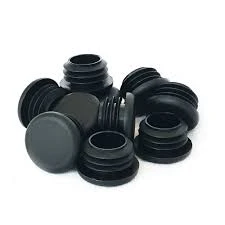Mobile:+86-311-808-126-83
Email:info@ydcastings.com
exhaust intake manifold
Understanding the Exhaust and Intake Manifold Their Role in Engine Performance
The internal combustion engine is a marvel of engineering, relying on a complex interplay of various components to operate efficiently. Among these components, the exhaust and intake manifolds play crucial roles in the functionality and performance of the engine. Understanding these two elements is essential for anyone interested in automotive technology or performance tuning.
What is an Intake Manifold?
The intake manifold is responsible for distributing the air (or air-fuel mixture, depending on the engine type) to the engine's cylinders. Its primary function is to ensure that each cylinder receives an equal amount of air, which is vital for optimal combustion and engine performance. The design and material composition of the intake manifold can greatly influence an engine's efficiency, power output, and throttle response.
Intake manifolds come in various shapes and sizes, and their design can vary significantly from one engine to another. Commonly constructed from plastic or aluminum, modern intake manifolds often incorporate features like runners that help to direct airflow efficiently into each cylinder. Engine builders often enhance these manifolds by optimizing their shape and volume to increase airflow and improve performance characteristics, fostering better acceleration and responsiveness at different RPM ranges.
What is an Exhaust Manifold?
Conversely, the exhaust manifold is designed to collect and direct exhaust gases away from the engine. After combustion occurs in the engine's cylinders, the waste gases need to be expelled efficiently to allow for the intake of fresh air and fuel. The exhaust manifold serves this purpose by channeling exhaust from each cylinder into a single pipe, usually leading to the catalytic converter and then to the vehicle’s exhaust system.
Exhaust manifolds can be made from cast iron, stainless steel, or other heat-resistant materials, depending on the application and specific needs of the engine. The design of an exhaust manifold affects not only the engine's performance but also its sound and emissions. A well-designed manifold can reduce backpressure, allowing exhaust gases to exit the engine more freely, thus improving overall engine efficiency and horsepower.
exhaust intake manifold

The Relationship between Intake and Exhaust Manifolds
The performance of a combustion engine is significantly influenced by the relationship between the intake and exhaust manifolds. The two systems need to work in harmony to ensure that air enters the cylinders smoothly and exhaust gases exit without creating excessive backpressure. When the engine is running, the intake manifold's design can affect the air velocity entering the cylinder, while the exhaust manifold influences how quickly the exhaust gases can exit.
Tuning both manifolds can yield notable benefits in performance. For example, adjusting the length of intake runners can help tune the engine for specific RPM ranges, while changing the design of the exhaust manifold can alter the exhaust flow dynamics, potentially leading to improved horsepower and torque curves.
Aftermarket Upgrades
Automotive enthusiasts often seek aftermarket upgrades for both intake and exhaust manifolds to maximize their vehicle's performance. High-performance intake manifolds are engineered to increase airflow and improve throttle response, while performance exhaust manifolds (or headers) are designed to minimize backpressure and enhance exhaust flow.
When considering upgrades, it is essential to choose components that are tuned appropriately for the specific engine type and intended use—be it for daily driving, motorsport, or off-road adventures. The right combination of intake and exhaust manifolds can yield significant increases in performance metrics, providing a satisfying driving experience.
Conclusion
In summary, the intake and exhaust manifolds are integral components of a combustion engine, crucial for its performance, efficiency, and responsiveness. Understanding the principles behind their operation can help car enthusiasts make informed choices when it comes to upgrades and maintenance. As technology continues to evolve, the designs and materials used in these systems will likely advance, offering even greater performance potential for the next generation of vehicles.
-
Impeller Technology That Powers Precision in Pump SystemsNewsMay.22,2025
-
Valve Durability Begins with Quality Cast Iron ComponentsNewsMay.22,2025
-
Performance Cooling with Advanced Automobile Water Pump SolutionsNewsMay.22,2025
-
How Motor Housing and Oil Pans Shape Engine PerformanceNewsMay.22,2025
-
How Metal Castings Drive Modern Manufacturing EfficiencyNewsMay.22,2025
-
Exploring the Engineering Behind Valve Body CastingsNewsMay.22,2025











